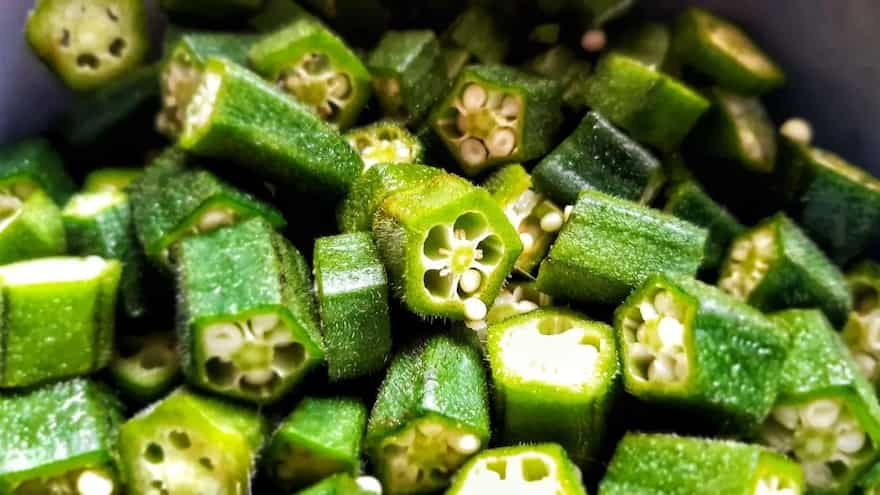Ask any kid what they think about bhindi and nine times out of ten you’ll be met with a look of pure horror and disgust. More than the taste, this reaction is usually because of the texture because a sticky, slimy mess isn’t appealing, at any age. As adults, we’ve sort of made our peace with the possibility of our bhindi being sticky, but there are some ways you can avoid it altogether.
The stickiness itself is nothing gross, it’s a natural substance called mucilage (admittedly a pretty gross name) that helps the plant store food and water as well as germinate properly. So it’s actually a really helpful addition. Plus, it’s the same substance secreted by Aloe Vera, and if we can learn to love that, we can stop hating on the poor bhindi too.
So, now we’re feeling grateful for mucilage, let’s learn how to get rid of it:
1. Use Acids
No, not the chemical kind, the edible kind. Adding acidic elements to your bhindi dish is a surefire way to reduce the stickiness. The acids in certain ingredients react with the chemicals in the mucilage and help them to break down quickly for less residual sliminess in the final product.
Some acidic options include:
- Tomatoes
- Vinegar
- Lemon
- Tamarind
- Kokam
- Yoghurt
2. Keep Them Dry
Moisture is the greatest enemy of bhindi. They should only ever be washed before chopping and that too as little as possible. After you’re done, pat them dry with a paper towel and leave them to air dry for as long as you can before cooking with them.
3. Don’t Cover and Cook
Again with the moisture angle. Covering your bhindi at any stage during the cooking process encourages steam and as a result mucilage. So unless it’s absolutely crucial to your recipe, skip the lids and let those bhindi breathe.

4. Minimal Water During The Cooking Process
We’ve made it pretty clear, right? Water = Bad. But what happens when you’re putting bhindi into a wet dish like a curry? Good question. Here, the best approach is to fry the bhindi off before it even sees the curry. It’s a slow process and you’ll need to stir fry them for around 10-12 minutes before the mucilage disappears, but it’s well worth the extra step.
5. Add Salt At The End
Salt is another common culprit behind soggy bhindi. If added throughout the cooking process it tends to leach into the vegetable and cause even more sliminess. So try to leave the salting to the very end of the cook, and keep your fingers crossed that you don’t forget.
6. If All Else Fails, Try Besan
If you’ve tried all of that and still end up with a sticky mess, then offer up a sacrifice to the vegetable gods because you’re definitely cursed. Or just mix in half a tablespoon of besan (gram flour) and return them to the frying pan for a few minutes until the flour cooks out and the excess stickiness has disappeared.
Now you’re armed with the knowledge you need, go forth and conquer every bhindi recipe without fear.


